Scheduled monuments in Orkney
A scheduled monument in Scotland is a nationally important archaeological site or monument which is given legal protection by being placed on a list (or "schedule") maintained by Historic Environment Scotland. The aim of scheduling is to preserve the country's most significant sites and monuments as far as possible in the form in which they have been inherited.[1]
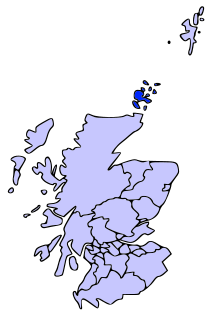
The process of scheduling is governed by the Ancient Monuments and Archaeological Areas Act 1979, which aims "to make provision for the investigation, preservation and recording of matters of archaeological or historical interest". The term "scheduled monument" can apply to the whole range of archaeological sites which have been deliberately constructed by human activity but are not always visible above ground. They range from prehistoric standing stones and burial sites, through Roman remains and medieval structures such as castles and monasteries, to later structures such as industrial sites and buildings constructed for the World Wars. Some buildings or structures which were both scheduled and listed have had their listing designations removed to reduce the duplication.
In 2017 there were 8238 scheduled monuments in Scotland.
Notable Scheduled Monuments in the Orkney Islands
| Name | Location | Description | Ref No | Image |
|---|---|---|---|---|
| Castle Bloody chambered cairn | Shapinsay | Prehistoric feature on the island of Shapinsay | SM1325 | |
| Dennis Head Old Beacon | North Ronaldsay | Oldest surviving lighthouse in Scotland | SM6596 | 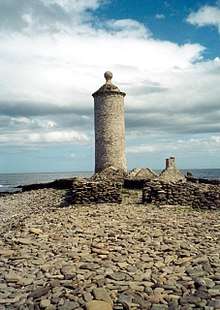 |
| St Nicholas Church | Orphir | Remains of 12th-century round church | SM13379 |  |
| Earl's Palace, Birsay | Birsay | Ruined 16th-century palace | SM90033 | |
| St Magnus Church, Egilsay | Egilsay | Roofless medieval church and part of adjacent burial ground | SM90137 | 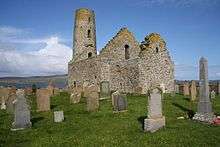 |
| Eynhallow Church | Eynhallow | Medieval church and later settlement | SM90144 |  |
| Bishop's Palace | Kirkwall | 12th century palace of the Bishop of Orkney | SM90193 | 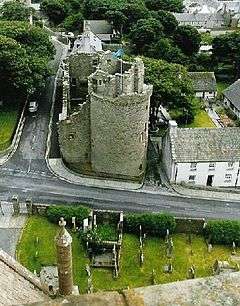 |
| Earl's Palace, Kirkwall | Kirkwall | Ruined 17th-century Renaissance-style palace of Earl of Orkney | SM90194 | 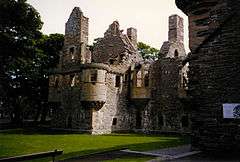 |
| Knowe of Yarso Chambered Cairn | Rousay and Egilsay | Neolithic chambered burial cairn c.2900 BC | SM90198 |  |
| Noltland Castle | Pierowall | Incomplete 16th century castle | SM90231 |  |
| Quoyness chambered cairn | Sanday | Neolithic chambered burial cairn on Els Ness | SM90243 |  |
| Rennibister Earth House | Bay o' Firth, Orkney | Souterrain accessed by hatch in modern roof | SM90245 |  |
| Stenness Standing Stones | Stenness | A stone circle, henge and all other remains | SM90285 | .jpg) |
| Taversöe Tuick Chambered Cairn | Rousay and Egilsay | Chambered cairn containing two levels of chamber | SM90297 |  |
See also
- List of Category A listed buildings in Orkney
- Heart of Neolithic Orkney World Heritage Site
References
- "What is scheduling?". Historic Environment Scotland. Retrieved 2 September 2017.